
Transcontinental Countries
First published: Tuesday August 16th, 2022
Report this blog
Transcontinental Countries
Transcontinental or intercontinental is a word describing a country that straddles or has territory in multiple continents (2 or more). Such countries can be sorted into 2 or 3 groupings (contiguous, and non-contiguous, as well as countries that might or might not be transcontinental depending on their claims, and the definition of continent boundaries). In this blog I will divide these countries into 5 different sections:
- Contiguous: Meaning that they directly straddle two continents (even though this can be hard to define).
- Non-contiguous: Meaning they have territory in more than one continent, but not directly. This will be divided into multiple subsections as seen below.
- Non-contiguous (overseas territories): The same as above, but only by overseas territories. This will also be split from the below section.
- Non-contiguous (Antarctic claims): The same as above but only for Antarctic claims.
- Other: Including dubious or ambiguous cases with little recognition.
Note that some countries will fall into more than one of these groups. Anyway, let's get into it!

Contiguous
Russia:
Russia is probably the most well-known example of a transcontinental country. It is no surprise that this gargantuan country has territory in both Europe and Asia. The generally accepted 'border' between these two continents is the Ural Mountains and the Ural River, both of which Russia's territory crosses.
Verdict: Russia is part of Europe and Asia, though usually seen as a European country.
Egypt:
Although you could argue that Egypt isn't contiguously transcontinental, it really is, and I'll explain why. The divider between Africa and Asia is the Suez Canal, so yes, Egypt is split in two in this way (not to mention other ways such as the Nile River). But the Suez Canal is manmade, and therefore doesn't count, thus making Egypt contiguously transcontinental.
Verdict: Egypt is part of Africa and Asia, though usually seen as an African country.
Panama:
In the same way as Egypt before, Panama is split by the manmade Panama Canal; the same canal that is often viewed as the divider between North America and South America. Viewing the canal as the border however puts Panama City in South America, whereas Panama itself is almost always considered North American.
Verdict: Panama is part of both North and South America, though usually seen as a North American country.
Turkey:
Unlike Egypt and Panama, the Bosporus and Dardanelles Straits that split Turkey in 2, and also divide Europe and Asia, are natural. However, Turkey's portions of Asia and Europe are immediately adjacent to each other, and so therefore Turkey is still contiguously intercontinental. Interestingly, Turkey's largest city, Istanbul, is the largest transcontinental city in the world.
Verdict: Turkey has land in both Asia and Europe, but is considered an Asian country by most.
Azerbaijan:
Azerbaijan, along with Georgia (and kind of Kazakhstan) are heavily debated as to whether they are part of Europe or Asia, or as we will see: both. The usually accepted border between the two in this area is the Caucasus mountain range, the same mountain range that runs through the north of Azerbaijan. Thus, at least in my opinion, Azerbaijan is a transcontinental country, with territory both north and south of the mountains.
Verdict: Azerbaijan is part of Asia and Europe, though usually seen as an Asian country.
Georgia:
Not much to say about Georgia that is different to Azerbaijan. In fact there isn't really anything else to say, so Georgia is transcontinental.
Verdict: Same as Azerbaijan.
Kazakhstan:
As mentioned above, the Ural River forms the border between Europe and Asia, and that same river runs through the far Western part of Kazakhstan. This makes Kazakhstan part of both Europe and Asia.
Verdict: Kazakhstan is in both Asia and Europe, though mostly seen as an Asian country.
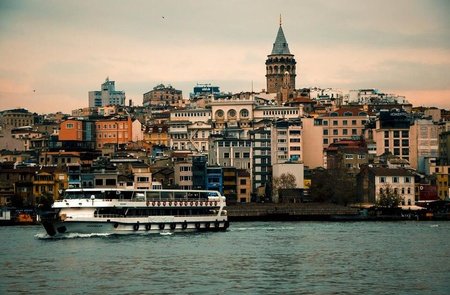
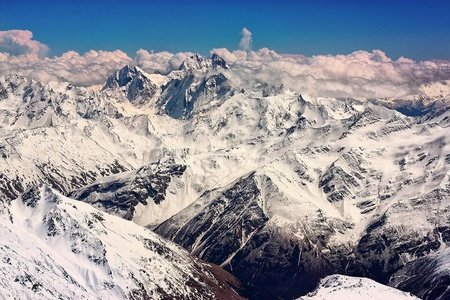
Non-contiguous
Indonesia:
This could be debated, but by my personal views that the whole island of New Guinea is part of Oceania make Indonesia definitely intercontinental. Indonesia has the western half of New Guinea, making it non-contiguously transcontinental.
Verdict: Indonesia is part of Asia and Oceania, although always considered an Asian country.
United States:
The American island state of Hawaii is geographically part of Oceania, therefore making the United States non-contiguously in multiple continents.
Verdict: The United States is in both North America and Oceania, but is a North American country.
Venezuela:
Venezuela is sometimes considered transcontinental because of the Isla Margarita archipelago, just north of the country's Caribbean coast. This archipelago however is often considered as South American. However, Venezuela controls an uninhabited Caribbean island called Aves Island or Isla de Aves (the island is disputed with other countries such as the United States, the United Kingdom, the Netherlands, and Dominica). This island is most definitely in North America, and so Venezuela is transcontinental.
Verdict: Venezuela is part of South and North America, but is a South American country.
Colombia:
Colombia, like Venezuela, controls an island (or rather archipelago) in the Caribbean that makes it transcontinental with North America - the San Andres and Providencia archipelago.
Verdict: Basically the same as Venezuela.
Chile:
Chile is generally considered transcontinental because of Easter Island and Isla Salas y Gomez which are part of Polynesia, and thus part of Oceania. These make Chile hard to categorise because they are given the status of 'special territory', but at the same time are part of the Valparaiso Region of Chile. So I'm not sure whether or not to include it in this category or the overseas territory one below.
Verdict: Chile has islands that are part of Oceania, but Chile itself is a South American country.
France:Now France is an interesting one for sure! The country of France is comprised of 101 departments (96 in metropolitan France, and 5 overseas). The minority of 5 overseas departments, remnants of the late French Colonial Empire, have sparked many conflicts in JetPunk comment sections, as well as a lot of confusion. The main culprit is French Guiana, because it technically gives France a border with both Suriname and Brazil, and French Guiana isn't an overseas territory, but rather an overseas department, meaning that it is as much a part of France as Paris is. French Guiana, along with Guadeloupe, Martinique, Mayotte, and Réunion, make up the 5 overseas departments and because of these France has direct territory in Europe (metropolitan France), South America (French Guiana), North America (Martinique and Guadeloupe), and Africa (Réunion and Mayotte).
Verdict: France is tough to explain, but has territory in Europe, North and South America, and Africa, making it non-contiguously transcontinental. It is generally considered part of Europe.
Italy:
Italy has several islands in the southern Mediterranean and closer to Tunisia than Sicily (Pantelleria and the Pelagie Islands). Of those islands, 2 of the 3 Pelagie Islands (Lampedusa and Lampione), are considered part of Africa. Pantelleria and Linosa (the third Pelagie Island) are also considered part of Europe.
Verdict: Italy is in Europe, except for 2 tiny islands that are in Africa, which makes it transcontinental.
Yemen:
Most of Yemen is located on the Arabian Peninsula (Asia), and even its Red Sea islands are part of Asia, but the island of Socotra is often considered part of Africa, thus making Yemen intercontinental.
Verdict: Yemen is an Asian country, however it does control the African island of Socotra.
Greece:
Greece is a tough one. It's hard to define the exact geographic border between Europe and Asia through the Aegean Sea. Greece has many islands just of the coast of Turkey's Anatolia Peninsula, which are often considered part of Asia (for example it would be weird to consider Rhodes as European), and that makes sense, so Greece is transcontinental.
Verdict: Greece's Aegean islands close to Asia Minor make Greece part of Europe and Asia, though it is mostly European.
Japan:
Japan mostly consists of an archipelago in Asia, however the Izu Islands, and Bonin Islands can be considered part of Oceania. I can see why some would consider them Oceanian, but personally, I'd consider them still Asian. However the atoll of Minami-Tori-shima (or Marcus Island) is much closer to Micronesia, and therefore is Oceanian, making Japan transcontinental.
Verdict: Japan is mostly part of Asia, however parts of Japan lie in Oceania.
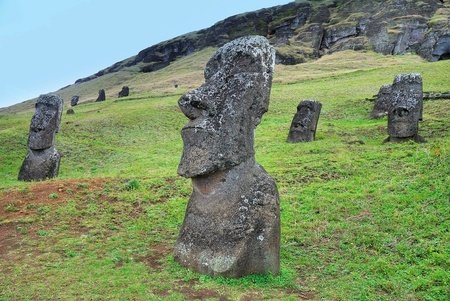

Non-contiguous (overseas territroies)
United States:
The United States is mostly located in North America, but some parts (including the aforementioned Hawaii) are not. Other than Hawaii, there are the overseas territories of Guam, American Samoa, and the Northern Mariana Islands which are part of Oceania, as well as other 'Minor Outlying Islands' like Wake Island and Midway Atoll. These also make the US transcontinental.
Verdict: The US has many overseas territories that are part of Oceania, though the US is almost never considered non-North American.
United Kingdom:
The United Kingdom of Great Britain and Northern Ireland, is located within the geographical bounds of Europe. However, the UK has many 'dependent territories' around the world, making it transcontinental. These overseas territories give the UK territory in North America (Bermuda, Anguilla, Turks and Caicos Islands, Montserrat, the Cayman Islands, and the British Virgin Islands), South America (Falkland Islands), Oceania (Pitcairn Island), Africa (Ascension, Saint Helena, and Tristan da Cunha), and Asia (Akrotiri and Dhekelia). The British Indian Ocean Territories are in either Asia or Africa, and the islands of South Georgia and the South Sandwich Islands could be considered South American, otherwise they are Antarctic.
Verdict: The UK's many overseas territories make it transcontinental and part of every continent.
Denmark:Greenland, a constituent part of the Danish Realm, makes the Kingdom of Denmark transcontinental through an overseas territory. Greenland is an autonomous region, though is part of Denmark, and is generally considered part of North America. Although it is politically closer to Europe, it is geographically North American, and its natives are more closely related to those of North America (particularly Canada and Alaska), though they do have ties with those from Northern Europe in the Artic Circle area.
Verdict: Greenland is part of North America, and part of Denmark, making Denmark transcontinental. Denmark is considered European.
Netherlands:
Most of the Netherlands is in Europe, but they do have several island territories in the Lesser Antilles in the Caribbean Sea. 3 of these territories are in the Leeward Islands (North America), and 3 (the ABC Islands) in the Leeward Antilles (often considered South American).
Verdict: The Netherlands is considered European, though it has territory in North and South America, making it transcontinental.
Spain:
Spain is mostly part of Europe, though it has territories in Africa, including the Canary Islands, Ceuta, Melilla, and other unincorporated territory. Therefore Spain is transcontinental.
Verdict: Spain is a European country, with about 5% of their population in Africa.
France:
France not only has overseas departments (mentioned above), but also has overseas territories, which fits it into this category as well. In North America, France has Saint Barthelemy, Saint Martin, and Saint Pierre and Miquelon. In Oceania France controls French Polynesia, New Caledonia, and Wallis and Futuna.
Verdict: In addition to the overseas departments outlined above, France has more territory in North America, and territory in Oceania via its overseas territories.
Portugal:
Continental Portugal, along with the overseas territory of the Azores, are located in Europe, but the autonomous region of Madeira is part of Africa. This makes Portugal transcontinental. It should also be noted that the Azores can sometimes geologically be split between Europe and North America because of tectonic plates, but geographically they are part of Europe.
Verdict: Portugal is part of Europe and Africa, though mostly Europe, and it is a European country.
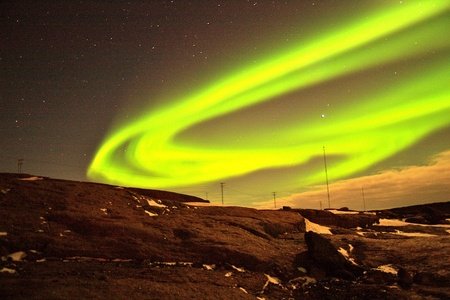
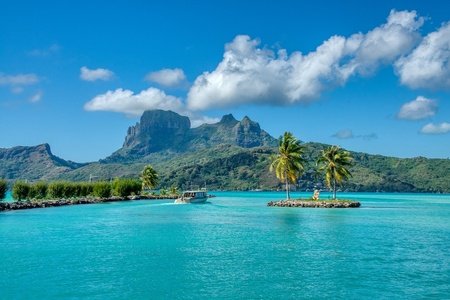
Non-contiguous (Antarctic claims)
Australia:
Australia claims the largest portion of Antarctica, and the overseas territory of McDonald and Heard Islands can be considered Antarctic.
Verdict: Australia claims part of Antarctica.
New Zealand:
Verdict: New Zealand also claims territory in Antarctica.
Argentina:
Verdict: Argentina claims territory in Antarctica.
Chile:
Verdict: Chile claims territory in Antarctica.
United Kingdom:
The UK claims part of Antarctica, and the islands of South Georgia and the South sandwich Islands can be considered Antarctic.
Verdict: The UK claims part of Antarctica.
France:
France claims part of Antarctica and also has the Kerguelen Islands, which can be considered Antarctic.
Verdict: France claims part of Antarctica.
Norway:
Norway claims a portion of Antarctica and also has Bouvet Island that could be considered Antarctic.
Verdict: Norway claims part of Antarctica.
South Africa:
South Africa control and administer the Prince Edward Islands in the Sub-Antarctic which can be considered as part of Antarctica.
Verdict: South Africa has territory that is possibly Antarctic.
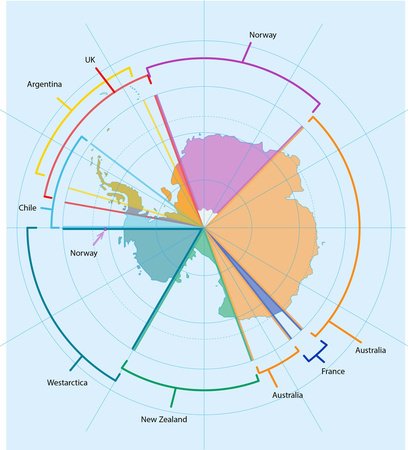
Other
Just to explain this category a little more. Some of these countries are not transcontinental. The only reason I've included them is because some debate which continent they actually form a part of. Some here could be transcontinental, but opinions differ on most of these examples. Also note that there are many countries that have already been mentioned, but they are included here because of something debatable...
Cyprus:
Ah... Cyprus! Well, most JetPunkers are well aware of the enormous Cyprus debate that has on more than one occasion threatened to spiral the otherwise placid and tranquil JetPunk community deep into a not-so-placid civil war. Anyway, Cyprus is sometimes considered European, and sometimes Asian, and sometimes even African. However, I think we all know deep down that Cyprus is an integral part of the South American continent.
Verdict: Cyprus' placement is a heated debate, but is usually considered Asian or European.
Armenia:
The Caucasus Mountains form the border between Asia and Europe, and this makes it debatable whether there is any Armenian territory north of said mountains.
Verdict: Armenia could be transcontinental, and if so, it is Asian and European, though generally associated with Asia.
Australia:
Australia is made up of 6 states, 3 internal territories (if you include Jervis Bay Territory), and 7 external territories (see here for more). All of these states and territories are part of the Oceanian continent... or are they? There are several territories and islands that some consider part of another continent. There are the aforementioned McDonald and Heard Islands (Oceania or Antarctica), and the Cocos (Keeling) Islands, and Christmas Island (Oceania or Asia). The Torres Strait Islands (part of Queensland), and the Tiwi Islands (Northern Territory) are also sometimes, though very rarely, considered part of Asia.
Verdict: Australia is mostly Oceanian, though some consider some islands and external territories as either Asian or Antarctic.
Colombia:
Colombia controls Malpelo Island in the Pacific Ocean which is sometimes considered Oceanian, but I would personally view it as still South American.
Verdict: Colombia is South American, though could have territory in Oceania.
Ecuador:
Similar to Colombia above, Ecuador's Galapagos Islands in the Pacific Ocean are thought by some to be part of Oceania.
Verdict: Same as Colombia.
Trinidad and Tobago:
Another one that is debated, this time between North and South America. Interestingly, the island of Trinidad is half on the South American tectonic plate, and half on the Caribbean plate. Though the country is much closer to the South American mainland, it is generally linked with the other Caribbean islands, and thus often thought to be North American.
Verdict: Trinidad and Tobago is generally considered North American, though some would view it as South American.
United States:
The United States has many territories in the Oceania as mentioned earlier, but it also has some ambiguous cases. The Aleutian Islands in Alaska are considered by some to be completely in North America, or part in North America and part in Asia, or part in North America and part in Oceania, or completely Oceanian, or split between all 3... it's confusing.
Verdict: The United States is transcontinental (as already proved), but the Aleutian Islands which are mostly considered North American, could also be Oceanian or Asian.
Malaysia:
Malaysia, along with many examples below, have territory in the Malay Archipelago. Back in the olden days (19th century), the Malay Archipelago was considered by most to be part of Oceania. However, since geological studies have advanced, and the fact that most people from these islands are more closely related to other Southeast Asians, basically everyone considers them Asian.
Verdict: Though Asian, some might consider Malaysia's territory on Borneo Oceanian.
East Timor:
Verdict: East Timor could be considered either Asian or Oceanian.
Brunei:
Verdict: Brunei could be considered either Asian or Oceanian, though mostly Asian.
Indonesia:
In addition to what was mentioned above with the island of New Guinea, Indonesia is considered by some to be fully Oceanian, or fully Asian.
Verdict: Indonesia could be considered by some to be Oceanian, but is usually considered Asian.
Philippines:
The Philippine Islands lie quite close to the Oceanian sub-region of Micronesia, and some have place them in that sub/region and thus in Oceania for that reason.
Verdict: The Philippines are Asian, but some may consider them Oceanian.
Papua New Guinea:
Papua New Guinea is thought be some to be Asian, but most people agree it is Oceanian.
Verdict: PNG is Oceanian, but some may consider it Asian.
Singapore:
Singapore is in Asia. Some (very, very few) however consider it Oceanian because of its position in the Pacific and in the Malay Archipelago.
Verdict: Singapore is in Asia.
Taiwan:
The Republic of China (Taiwan) is an Asian island state. However, because it is located in the Pacific Ocean, some people view it as Oceanian (but basically no one).
Verdict: Taiwan is in Asia.
China:
Even less than Taiwan, China is only here because of its claims over Taiwan. For China to be considered transcontinental, one would have to see Taiwan as Oceanian, and see China's claims over Taiwan as valid. China also controls various islands in the Pacific, for example in the South China Sea, that some would consider Oceanian, although the islands in said sea is also disputed.
Verdict: China is in Asia.
Japan:
Japan is in Asia, but some consider it Oceanian because it lies in the Pacific.
Verdict: Japan is in Asia.
Mexico:
The Mexican controlled Guadalupe Island and Revillagigedo Islands, as well as Rocas Alijos, are sometimes considered Oceanian.
Verdict: Mexico is in North America, with some islands that could be in Oceania.
Costa Rica:
Costa Rica, the same as Mexico, has an island in the Pacific - Cocos Island.
Verdict: Same as Mexico.
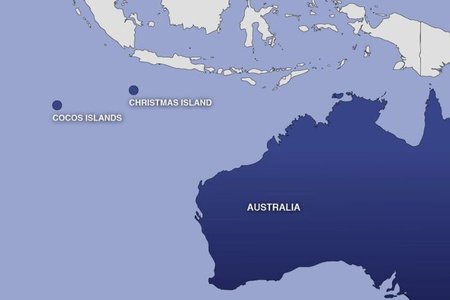
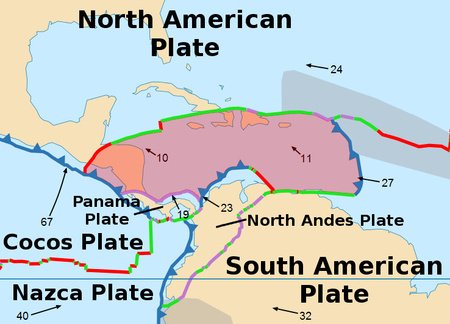

Summary
So that's a wrap. Hopefully I've covered them all, if not let everyone know in the comments please don't nitpick too much. There are obviously some examples I've left out (otherwise this blog would never end), including any country with islands in the Pacific, and Central American countries. But I hope I've done this topic some sort of justice in this blog. If you want more information, see this wikipedia page (where I got a lot of my information), or this one that will inform you about continental borders. Thanks for reading, sorry it was so long, and see you next time!
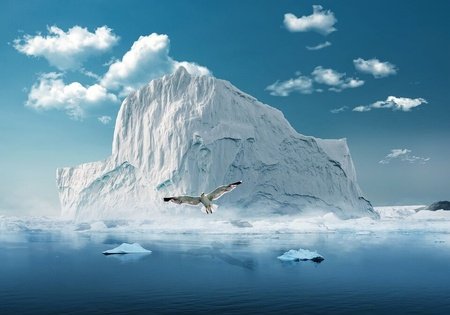

Cyprus will forever be the catalyst for intense arguments and debates across JetPunk until the end of time.
Brilliantly researched and written, and very interesting.
Cue the long debate about Cyprus.......
I wish my empire were real. Then it would have been the one true transcontinental empire, spanning across Asia, Africa, Antarctica and probably Europe too (because of Azerbaijan and Kazakhstan). And the moon too, would that make it interplanetary? 🤔
Anyway, since no one has said the correct thing above, I would: CYPRUS IS IN ASIA!!!